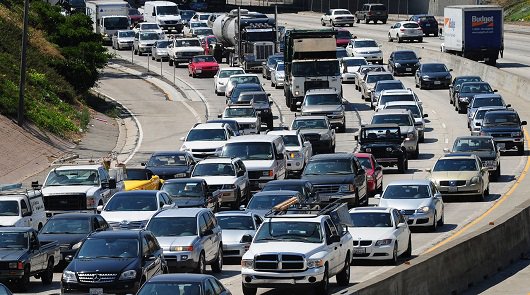A single autonomous vehicle is enough to prevent phantom traffic jams.

Phantom traffic jams (traffic jams caused by no apparent reason) are a real disaster of large cities. Some propose to fight them with a conscious method, maintaining a constant average speed. I do not know about you, but every day I am convinced that the method does not work. Perhaps the problem will be solved only when there are more connected cars on the roads. Under the cut is a translation of the Wired article about two studies related to connected cars and phantom traffic jams.
Everyone knows that autopilot systems will greatly facilitate driving. Even systems that require human control, such as the Tesla autopilot, the Super Cruise of the Cadillac, and the autopilot for traffic jam pilot from Audi, make driving easier and more likely safer.
The bad news is that cars with such systems are very expensive, and therefore on the roads are rare. In order for technology to fall in price and start to be massively introduced into machines, years have to pass. Decades so that it infiltrated all cars.
But don't get too jealous of rich drivers. In fact, they should even thank. Riding on the highway with folded hands on their knees, they do you a favor. A new study by the University of Michigan proves that the presence of even one autonomous and connected car on the road makes the driving process better for everyone.
The point is to prevent the so-called "phantom traffic jams." “We found that they are related to the characteristics of human behavior,” says lead author Gabor Orosz. If one of the drivers strikes the brakes for any reason, the driver behind him does the same - but, most likely, more sharply, because it took him a while to react the brake lights and press the pedal. "This leads to a cascade effect, when each succeeding stops a little more abruptly, and as a result, the entire car stream makes a stop." If one of the drivers presses the brake in a slightly more aggressive manner, the driver, after 10 cars, is forced to stop completely.
As part of the experiment, Oros and his team pulled 8 cars onto quiet roads in southeastern Michigan. Outwardly, all the cars were unremarkable sedans, but they could transmit their position and acceleration (ie, speed and direction). One car was chosen to act as an autonomous vehicle. The on-board computer was connected to its brakes and could press on the brake with the necessary intensity, doing it as early as possible.
The team was driving alongside the selected “autonomous” car at a speed of 55 miles per hour. This continued until one of the drivers began to brake, depressing the brake pedal more sharply each time. The driver in the next car was forced to press the brake with such intensity that his body and the bodies of the passengers leaned forward, held by the seat belts. The connected car received a warning in advance that several cars in front slowed down, and began to slow down smoothly - so that the passengers would not even spill their coffee. Drivers-people in the following sedan were also able to slow down more smoothly and did not get into the resulting cluster of cars.
A smoother driving style helped save energy: 19% of the charge in a connected car versus 7% in cars driven by a person driving behind it. This is important for reducing the amount of exhaust gases and increasing the number of electric vehicles on the roads.
A similar experiment from the University of Illinois in May 2017 showed that if every twentieth car was at least partially autonomous, it would eliminate permanent stops and the resumption of traffic on the roads. Among other cars in the stream, it would act like a safety car in Formula 1, keeping the speed of others under control. The study showed that even already common technologies such as adaptive cruise control, which maintains a given distance from the vehicle in front, benefit drivers in general.
A study by Michigan scientists has demonstrated new advantages that the transfer of vehicle position data provides. This gives cars the ability to see beyond the horizon or through the truck in front, while a car with cruise control can only interact with the car ahead (some of the most advanced systems can see two cars ahead, picking up radar signals reflected from the road).
“You don't need to see everyone,” says Oros. He found that the ability to see 3-4 cars ahead would be sufficient - with an increase in the viewing distance, the effect no longer gets better.
During the Obama presidency, there was talk of demanding that all new cars in the United States be able to transmit data about their situation. This was not fixed by law, but some manufacturers go ahead of the laws. General Motors puts such a system in the Cadillac CTS, Mercedes - in the S-Class and E-Class cars. Several Audi models use the transport-infrastructure system. She tells the driver how long the green light comes on. And the Israeli company Autotalks is developing a communication system for connected bikes.
Read about the transport of the future on robo-hunter.com:
All Articles